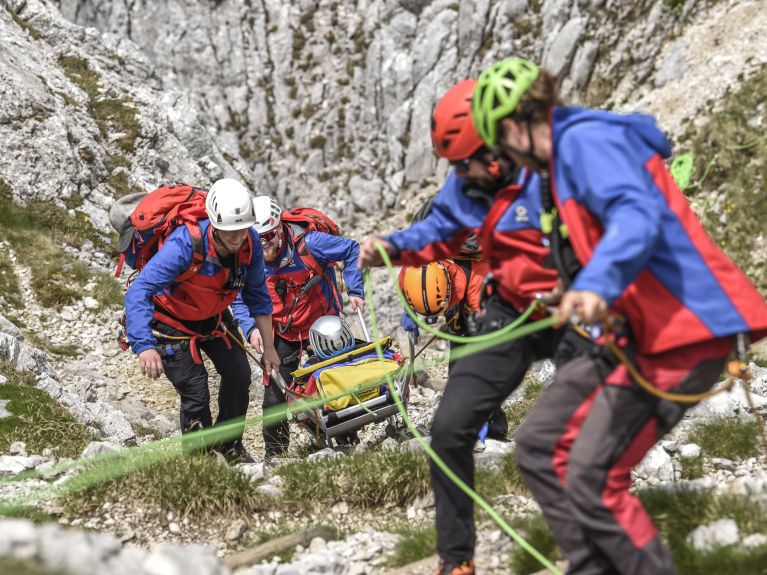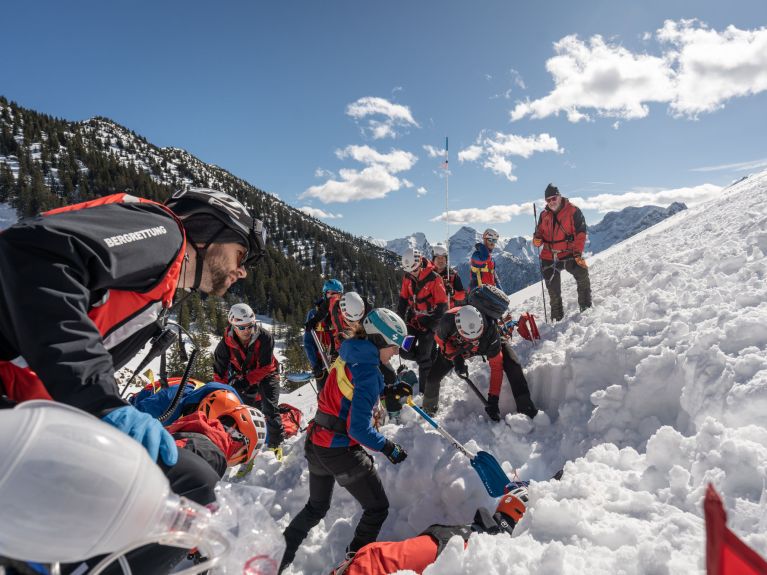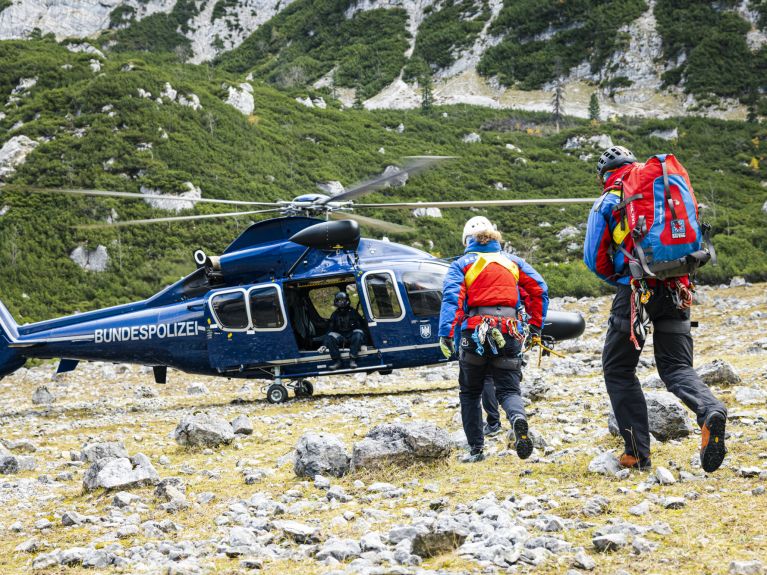Mountain rescue teams in action
Saving lives in dangerous situations: the volunteers of the mountain rescue service. The volunteers are ready for action around the clock in the Alps.
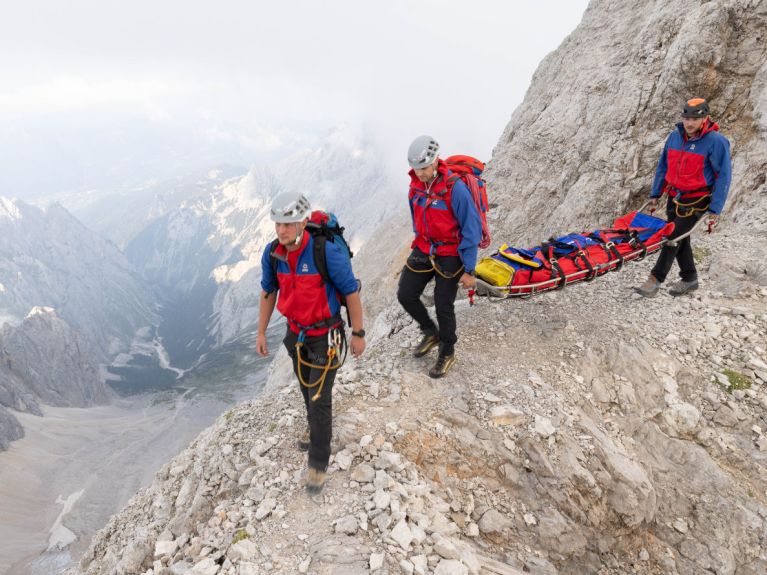
The Alps are a paradise for outdoor enthusiasts and a magnet for tourists - attracting thousands of people year-round who come here to hike, climb, ski or paraglide. But danger is always lurking: it’s just all too easy to trip, slip or fall. A sudden change in the weather can also pose a serious risk. Anyone who finds themselves in an emergency situation in Germany’s mountains should immediately grab their mobile phone and dial 112.
In the Bavarian Alps, the Bavarian Mountain Rescue Service will then come out to help. Nearly 4,000 volunteers work in this rough mountain terrain, including air ambulance crews, avalanche rescue dog teams and specialists in canyon and cave rescue. They were called out 8,306 times in 2024. “Our job is to help people who are injured or fall acutely ill in the mountains. We also come out to assist those who are lost, exhausted or stuck somewhere,” explains Roland Ampenberger, head of the Bavarian Mountain Rescue Service. Undertaking rescue operations in Alpine terrain and caves is far from easy, however. “Anyone wishing to volunteer with the mountain rescue service should live locally and have plenty of time and motivation. They also need to be competent mountain climbers and skiers,” says Ampenberger.
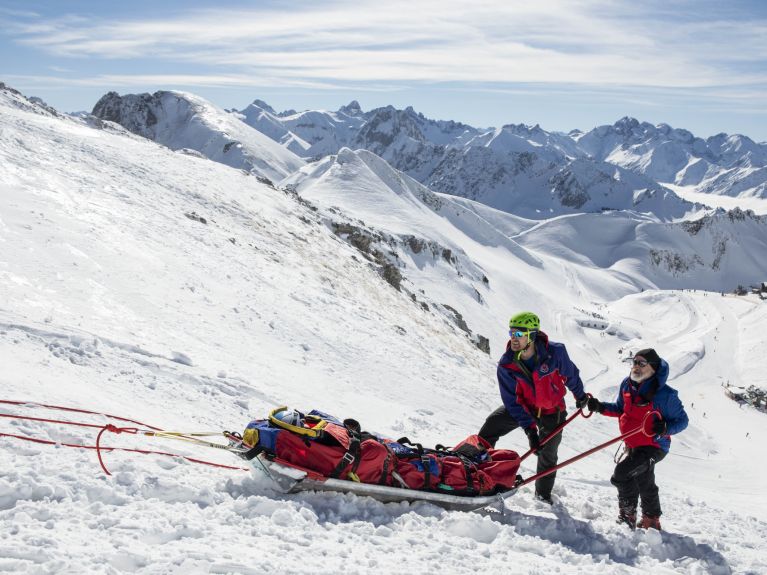
Mountain rescue crews need expertise and fitness
These skills are important, especially when working on steep slopes and at high altitudes. The Zugspitze and the Berchtesgaden Alps in Bavaria are particularly challenging for tourists and rescue teams alike. “Much of the time you will be crossing steep rocky terrain there, which requires both technical expertise and good fitness. Some of these areas are very popular destinations, meaning the local mountain rescue services are regularly called out - which poses significant challenges for the rescue teams,” says Ampenberger.
It is vital for anyone wishing to spend time in the Alps to realistically assess their own abilities and fitness level. Good preparation is also important - the websites of the German Alpine Club (DAV) provide detailed information about equipment and routes. Ampenberger urges people to remember that “nature and the mountains are neither a gym, a playground nor a city park. You have to take responsibility yourself. An awareness of the risks posed by the terrain and the ascent, knowledge of the current weather situation, information about the planned route and the right equipment are essential.”
Dieses YouTube-Video kann in einem neuen Tab abgespielt werden
YouTube öffnenThird party content
We use YouTube to embed content that may collect data about your activity. Please review the details and accept the service to see this content.
Open consent formBut if something goes wrong nonetheless, be it in the Alps or Germany’s low mountain ranges, the mountain rescue service with its 12,000 rescuers is ready to help around the clock.
The Bavarian Mountain Rescue Service
Founded: 1920
Members: 4,804
Call-outs per year: 8,306 (2024)
Emergency telephone number in Germany: 112
Other emergency numbers
The mountain rescue service is partly funded by donations.
